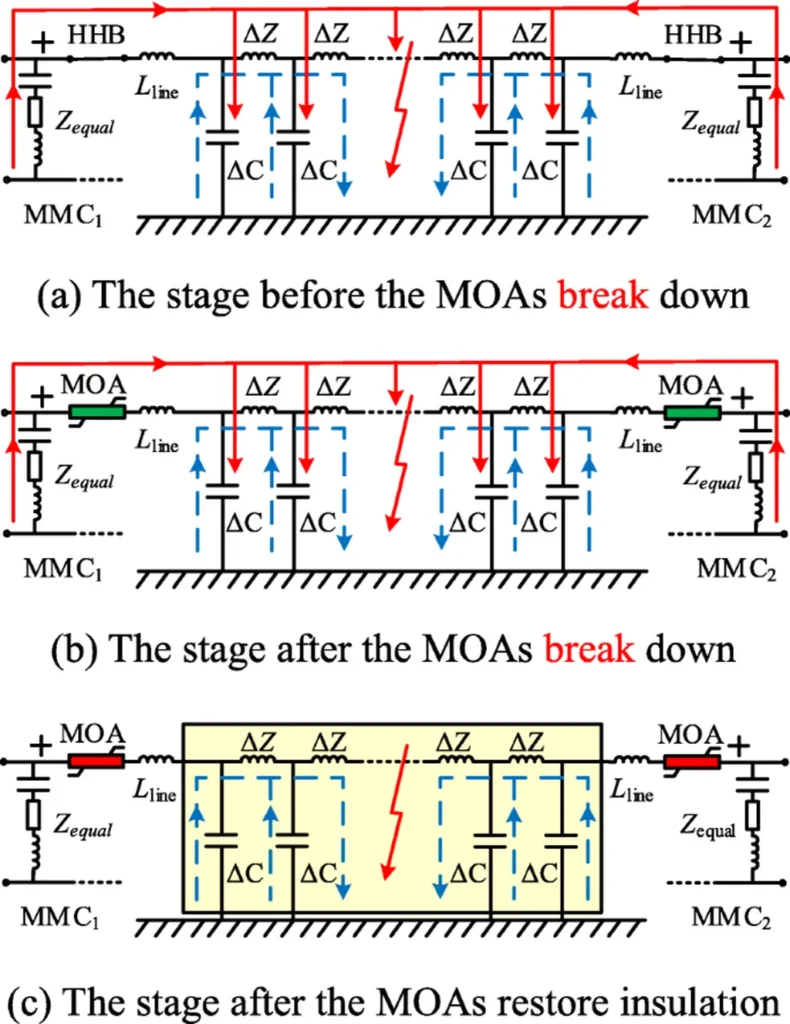In the rapidly evolving world of energy transmission, ensuring the reliability and safety of high-voltage direct current (HVDC) grids is paramount. A recent study published in the journal *Energies* offers a promising solution to a longstanding challenge in the field. Led by Weiming Zhang of the Electric Power Research Institute at State Grid Hebei Electric Power Company in Shijiazhuang, China, the research introduces a novel protection scheme for DC lines that could significantly enhance the resilience of multi-terminal voltage-source converter-based HVDC (VSC-HVDC) grids.
The study addresses a critical issue: high-resistance faults on DC lines, which often lead to insufficient protection reliability. Traditional protection methods struggle with these faults, and the introduction of current-limiting strategies—while beneficial for managing fault currents—can alter the system’s intrinsic fault characteristics, further complicating protection efforts. “The conventional methods just aren’t cutting it when it comes to high-resistance faults,” Zhang explains. “Our goal was to develop a protection scheme that could reliably identify faults regardless of the converter control strategies in place.”
The proposed protection scheme is designed to be immune to converter control strategies and highly tolerant to fault resistance. By analyzing post-fault current paths and identifying fault characteristics produced solely by the fault-induced voltage source, the researchers developed a sequential overlapping derivative transformation. This transformation magnifies the discrepancy between internal and external faults, forming the core of the fault-identification criterion. The zero-mode component is used for pole selection, ensuring accurate and reliable fault detection.
To validate their approach, the team built a four-terminal VSC-HVDC model using PSCAD/EMTDC software. Simulation results demonstrated that the characteristic quantity changed only marginally after applying the current-limiting strategy, and the proposed protection could reliably withstand fault resistances of up to 700 Ω. “The simulations showed that our method is robust and reliable, even in the presence of high-resistance faults and current-limiting strategies,” Zhang notes.
The implications of this research are significant for the energy sector. As the demand for flexible DC transmission grows, so does the need for advanced protection schemes that can handle the complexities of modern HVDC grids. The proposed protection scheme could enhance the reliability and safety of these grids, ultimately benefiting both energy providers and consumers.
Looking ahead, this research could shape future developments in the field of DC line protection. By providing a robust and reliable method for identifying high-resistance faults, the study paves the way for more resilient and efficient HVDC grids. As the energy sector continues to evolve, such innovations will be crucial in meeting the growing demand for clean and reliable energy transmission.
In the words of Zhang, “This is just the beginning. We hope our work will inspire further research and development in the field of DC line protection, leading to even more advanced and reliable solutions.” With the publication of this study in *Energies*, the journey towards more resilient HVDC grids has taken a significant step forward.

